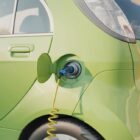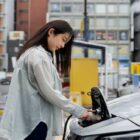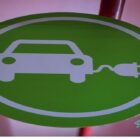Electric Vehicle, or EV revolution, is here. Rising worries about fossil fuels and the effects of global warming have led to an increased interest in environmentally friendly automobiles, such as electric vehicles.
Electric vehicles run on batteries. Governments, MNCs, startups, and investors throughout India have all voiced their enthusiasm for the future of electric transportation during the past five years. By 2030, the Indian Government intends for 30% of all private cars, 70% of all commercial vehicles, and 80% of all two- and three-wheeled vehicles to be electric.
Nonetheless, there are still several challenges associated with the EV industry, including supply chain problems, a dearth of charging station infrastructure, and so on.
In this post, we shall discuss how India can prepare for the EV revolution.
Let’s get started…
Challenges and Solutions for India to be Ready for the EV Revolution
Here is our list of challenges that the EV industry is experiencing at the moment. Along with these challenges, we have outlined solutions that Government and respective organizations should take to promote the EV market.
CHALLENGE: Lack of EV Charging Stations. The majority of locations in India do not have access to public charging stations.
SOLUTION: The Government should encourage private investors and business owners to establish EV charging stations in several locations. Doing so will encourage buyers to invest in electric vehicles. At the moment, due to the lack of charging facilities in several locations, buyers avoid investing in EVs. However, with appropriate planning government can come up with ways to promote the EV industry.
In terms of the infrastructure for charging electric vehicles, it is anticipated that India will have approximately 8,000 AC and DC fast chargers installed across the country, in addition to 6,000–7,000 chargers installed in homes and places of business.
CHALLENGE: There is a lack of standardization among different manufacturers of vehicles, which results in chargers and batteries that are not compatible with one another. In addition, electric vehicle batteries are frequently recycled just once, as their high price prevents them from being utilized more than once.
SOLUTION: Automobile owners and battery manufacturers should come forward to come up with a common solution for this issue. Companies like Godrej Tooling are striving to produce tools and dies for new engines, battery boxes, and high-strength, low-weight sheet metal parts. To develop high-precision dies for components with complicated geometry and achieve higher functional criteria, they are also utilizing 3D printing and additive manufacturing technologies.
To create a standardized EV ecosystem, the Government should guarantee efficient uniformity for the li-ion battery, charging infrastructure, and battery changing mechanism.
CHALLENGE: Cost of Charging. People find the cost of charging significantly higher.
SOLUTION: Several states have passed legislation that provides preferential rates for the charging of electric vehicles. These lowered charges might be anywhere between Rs 5 and Rs 7 and vary depending on the state. Consequently, the price of charging has significantly dropped, and more charging infrastructure for electric vehicles has been put in place. However, other key concerns need to be addressed, such as the role of energy distribution businesses (also known as discus), amongst other things.
CHALLENGE: Lack of Interest. Because of the lack of charging stations and other issues associated with EVs, buyers lack interest in electric vehicles.
SOLUTION: The expansion of electric vehicles (EVs) in this country is dependent on state governments enacting adoption legislation, incentive programs, and charging network infrastructure. A transformation in the talent pool is also necessary. By creating the appropriate market opportunities, we will be able to motivate the most talented people in this country to be inspired by the next generation of technological innovation, innovative design, and outstanding economic performance. The public sector and the business sector need to come together to make electric vehicles that perform best.
CHALLENGE: Waiting for Charging. Waiting for charging at a charging station is one of the major concerns. Of course, people today don’t have much time to wait at charging stations to get their vehicles charged.
SOLUTION: Having charging stations at shorter distances can eliminate this issue significantly. Here, Government plays a crucial role. As said earlier, Indian Government should come up with ways to encourage business owners to establish EV charging stations. Aside from that, the auto industry has to implement technology advancements that improve battery life and performance, cut down on unnecessary costs, and boost ROI. They should create a system that facilitates the widespread use of battery swapping technology, which dramatically shortens the time spent waiting for charging, reduces the size and volume of automobile batteries, and extends the amount of battery life. The high costs of importing EV mobility components can be avoided if they are developed and manufactured locally.
In addition, the EV industry can utilize data sciences, artificial intelligence (AI), and the Internet of Things (IoT). The integration of these cutting-edge technologies can help users have insights about battery performance, which are necessary for estimating and maximizing their useful lifespan.
So, these are a few of the ways that business owners and startups utilize to pave the path for the widespread adoption of EV technology.
CHALLENGE: The EV model’s widespread adoption across the country. Because of the various issues that the EV industry is facing at the moment, the widespread adoption of EV models across the country seems a task.
SOLUTION: The Government should encourage the relevant parties to move more quickly on battery localization and EV adoption. In addition, the Government should launch domestic battery manufacture by opening at least 20 Giga factories, taking into account current demands and existing infrastructure. As India works towards its goal of providing all-electric mobility across the country, the Government should support a retrofit scheme for the supposedly antiquated ICEs. In addition to exempting EVs from odd-even traffic systems, the Government should create special lanes and parking areas for them.
Thanks for reading! Hopefully, this article has been informative for you!


